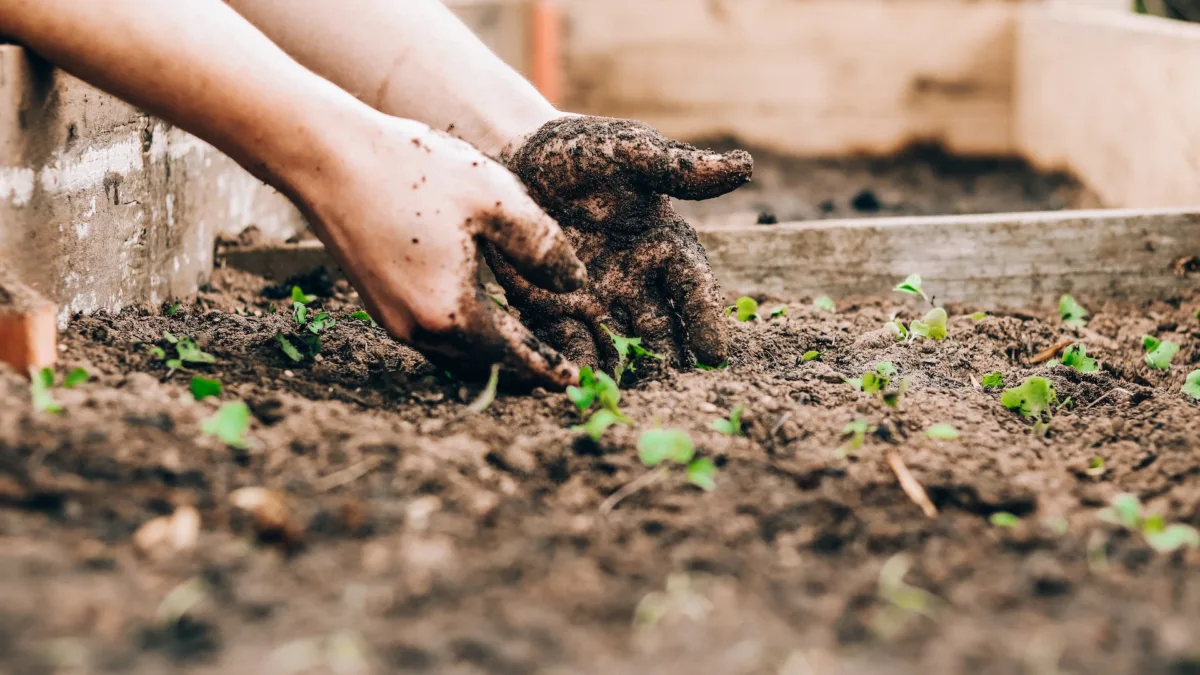In this article, we’ll look at how to prepare a good garden bed. We’ll discuss the importance of having an even soil surface and depth, as well as tilling and planting. Let’s get started!
Watch your back – always lift with your knees bent and back straight.
- Watch your back – always lift with your knees bent and back straight.
- Don’t twist your body while lifting, as this can cause injury or strain on the spine.
- Lift heavy objects with a wheelbarrow or other tool to help you lift heavy objects.
Keep tools sharp and clean.
The first step in making your garden bed is to find the right tools. You’ll need a shovel, rake and hoe for digging the ground; a hand trowel or spade for breaking up soil. A good pair of gloves will also be needed when you’re working outside in cold weather. Gloves protect you also from thorns, when you work with such plants. Make sure all your tools are sharp enough.
Choose the best location
The first step to making a garden bed is choosing the best location. You want to choose a sunny spot that has good drainage and soil. Additionally, the garden should be protected from winds and flooding. You should also consider to be able to easily water your garden, so a water tap should be in reach.
What is a good garden bed size?
The number on tip to find the right size of your bed? You should be able to reach each part of the bed without stepping into it. Don’t forget, you will work with this bed and it needs to be easily accessible. If you can access the bed from both sides, the bed should not be wider than 4 foot. If you can access it only from one side, make it even narrower.
The length of the bed is completely up to you. Ask yourself, how much do you want to grow. But, be honest to yourself: How much care can you put into your garden? Start small and grow bigger is a good advice. Often beginner overestimate how much work it is to maintain a nice vegetable garden.
Remove weeds
Remove weeds before you plant. Weeds compete with your plants for water, nutrients and sunlight. They can also harbor pests and diseases. To keep a healthy garden bed, remove all unwanted plants before you plant or seed it. Weed seeds are easier to remove before they sprout than those of the grasses that grow in your lawn area. If there is any doubt about whether something is a weed or not—remove it!
The best way to do this is by hand. Just pull out the entire root system of any suspected perennial herbaceous plants. If necessary use gloves when working near flowers or shrubs. Some flowers have small thorns which can prick your hands if you aren’t careful while pulling them out
Loosen the soil to prepare the bed
- Using a shovel or spade, loosen the soil and ensure it is damp when you start digging. It’s better to work when the soil is moist rather than dry because then you can loosen it more easily. This is especially true if you’re working in clayey soil.
- Dig up at least 10 inches deep. This will provide enough space for roots to grow and support your plants’ growing needs.
Remove large rocks
Remove large rocks, chunks of sod and other debris from the soil as you go. The first step in making a garden bed is removing large rocks, chunks of sod and other debris from the soil as you go. If you have a lot of rocks, you can use a sledge hammer to break them up into smaller pieces before they’re removed from your garden spot.
Mix compost in the bed

Compost is a good material for the soil. It helps keep the soil moist, which means you can grow plants more easily. In addition compost is reach in nutrients. You can purchase compost at a garden store or make your own. Mix in any compost at this time. It will help improve the health of your garden beds.
Add a layer of mulch
Adding a layer of mulch is one of the easiest ways to improve your garden. Mulch is basically shredded leaves and other plant matter that you place on the top of the soil. This prevents weeds from sprouting up and keeps pests away, which means your plants will be healthier overall! You can find more reasons, why you should mulch in our post Why you should mulch your garden.
A good garden bed requires some effort up front.
A good garden bed requires some effort up front. The more work involved in creating a great bed, the better off you’ll be when it comes time to plant seeds. If these tips seem daunting at first glance, don’t worry—they’re all easily achievable with just a little bit of time each day (or evening). So get started now! Gardening is a great way to spend time outdoors and get some fresh air. But if you want your garden bed to be successful, it’s also crucial that you pay attention when planting and care for them over the long term.

